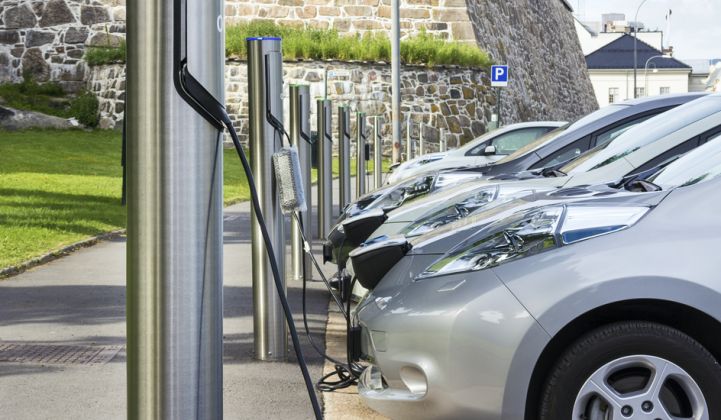The latest data on electric vehicle and plug-in hybrid electric vehicle sales shows continued strong progress toward mainstream adoption.
According to market tracker EV Volumes, 180,500 electric vehicles (EVs) and plug-in hybrid electric vehicles (PHEVs) were sold in the first four months of this year, a 42 percent increase over 2015 levels.
Those sales figures were lower than the second half of 2015, but EV Volumes noted demand for EVs and PHEVs spiked in November and December last year as certain incentives came to an end in China, Denmark, the Netherlands and Sweden.
The 2016 Global EV Outlook from the International Energy Agency (IEA) also said last year was a pivotal one for EV and PHEV sales. “The year 2015 saw the global threshold of 1 million electric cars on the road exceeded, closing at 1.26 million,” said the organization.
“This is a symbolic achievement highlighting significant efforts deployed jointly by governments and industry over the past 10 years. In 2014, only about half of today’s electric car stock existed. In 2005, electric cars were still measured in hundreds.”
Just as significantly, another report by the IEA noted that electric vehicles were the only class of carbon-reduction technology making enough progress to meet global goals to keep global warming below the level of 2º Celsius.
Nevertheless, there is still concern over whether the uptake of EVs and PHEVs is growing quickly enough to meet targets set by global policy organizations.
The Clean Energy Ministerial’s Electric Vehicles Initiative, for example, is looking to have 20 million EVs, PHEVs and fuel-cell vehicles on the road by 2020.
The Paris Declaration on Electro-Mobility and Climate Change, meanwhile, has a target of 100 million EVs (plus 400 million electric two- and three-wheelers) worldwide by 2030.
And to give climate change a 50 percent chance of staying within the 2º Celsius margin, the IEA thinks even greater levels of non-polluting transport will be needed. It says 150 million EVs are needed by 2030.
“Meeting these targets implies substantial market growth to develop further the current 1.26 million electric car stock, as well as the swift deployment of electric two-wheelers and buses beyond the Chinese market,” said the IEA in its Global EV Outlook 2016.
Elsewhere, the World Energy Council has said EVs will need to make up 16 percent of the total auto market by 2020 in order to achieve fuel economy improvement targets of approximately 30 percent set by China, the European Union and the U.S.
This level, up from around 1 percent of the auto market currently, will need 7.6 million EVs to be sold across the three territories by 2020.
China has the biggest shortfall, at 5.3 million, which means 22 percent of projected passenger car sales in the country will need to be electric. The country already has the world’s largest and fastest-growing EV market, with 34,000 new vehicles hitting the streets in July alone.
This was a 154 percent increase on the same month last year, according to EV Obsession, and more units than were sold in Canada, Europe and the U.S. together.
Promoting EVs makes sense in pollution-heavy, petroleum-light China, but there are concerns that the current boom in sales is being propped up by government subsidies that cannot go on forever.
For example, some speculate that Chinese consumers are buying subsidized EVs such as the Kandi out of financial necessity rather than a real desire to own the car. If those subsidies go away, so will demand. Therefore, it will be crucial for EV makers to create more of a buzz around their products -- following Tesla's lead.
This summer, Tesla replaced Volkswagen in the prestigious Brandz list of top ten car brands. It is thought to be the first time an EV maker featured among the industry’s most recognized names.
There are indications this growing acceptance of EVs as mainstream car brands could be helping to foster adoption, at least in the U.S.
GTM Research analyst Timotej Gavrilovic, author of an upcoming U.S. EV market report, said he was surprised by the pace of change in America. “The market started moving very fast,” he said, with “more investments and commitments from various stakeholders.”
"There's definitely a lot of developments that are indicating strong growth [in America]. As I was going through my forecasts, I revised them upward twice.”
This trend looks likely to continue after the White House announced new support for EVs. And worldwide, said Gavrilovic, manufacturers are continuing to push for growth.
“Nissan is growing its vehicle-to-gas capabilities in England, and Tesla and Chevrolet are looking to start selling affordable 200+ mile-range vehicles as soon as early 2017,” he said.
And with battery prices on a steady downward path, pricing and performance continues to improve. "All these developments are indicating strong growth potential," said Gavrilovic.



